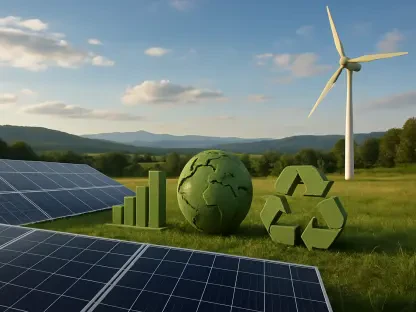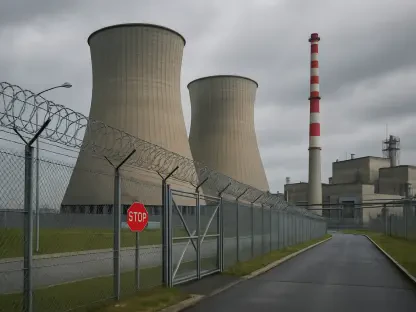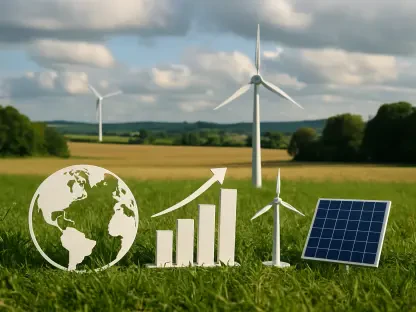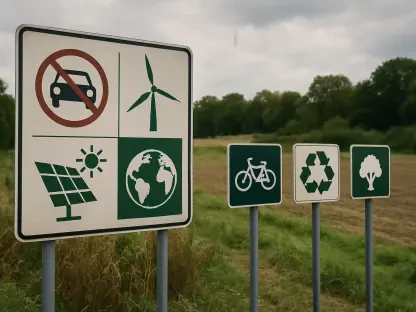As the world continues to grapple with climate change and the urgent need for sustainable energy solutions, biomass emerges as a linchpin in transitioning to a low-carbon economy. Biomass energy, derived from organic materials like wood, agricultural residues, and waste, stands out for its ability to deliver a reliable, carbon-neutral energy source. Projected market growth from USD 75.05 billion to USD 120.67 billion from 2025 to 2035 underscores the increasing demand for clean energy solutions. Governments and industries worldwide are converging efforts to harness the potential of biomass as a sustainable energy alternative, supported by a mosaic of policies and technological advancements that propel its development.
Drivers of Biomass Market Growth
Government Policies and Financial Incentives
Both developed and emerging economies recognize the necessity to reduce dependency on fossil fuels, and biomass has become an integral element of this strategy. Numerous government initiatives, including subsidies, tax rebates, and feed-in tariffs, have been deployed to stimulate investments in biomass technologies. These incentives make biomass more economically manageable by easing the financial burden associated with initial setup costs, a major barrier for many stakeholders. Additionally, renewable portfolio standards and carbon credit programs have increasingly facilitated the uptake of biomass for electricity generation, heating, and fuel applications, directly impacting market expansion.
The regulatory framework is designed to align with international sustainability goals, promoting innovations and encouraging adoption. The framework fosters a fertile ground where biomass can flourish, ensuring a sustained commitment to the reduction of greenhouse gases. Policies are continually evolving to address ongoing challenges, such as sustainability and ecological considerations, effectively balancing economic and environmental objectives. These guiding structures are crucial to maintaining momentum, as they offer the backbone that supports the burgeoning biomass sector’s financial viability and environmental sustainability.
Waste Management and Circular Economy Initiatives
As concerns over waste management grow, there’s an increasing need to incorporate circular economy principles into energy strategies. Biomass offers a unique solution by turning waste into an energy resource, thus mitigating landfill usage and managing urban and agricultural waste efficiently. This dual benefit of waste transformation and energy generation is particularly compelling at a time when sustainable waste management solutions are critically necessary. Transforming organic waste into biomass creates value from materials that might otherwise contribute to environmental degradation and pollution.
This approach encourages innovations in waste handling and resource efficiency, propelling the biomass market’s growth. As industries refine processes to optimize the conversion of organic waste into energy, they contribute to a more sustainable, low-impact footprint. This model is finding favor in both developed and developing regions alike, where it offers pathways to integrate sustainability into practices at multiple levels. By adopting circular economy principles within the biomass sector, industries can not only meet current energy demands but also future-proof their operations against tighter regulations and increasingly eco-conscious consumer bases.
Reliability and Technological Advancements in Biomass
Biomass as a Dispatchable Energy Source
A standout advantage of biomass energy is its reliability compared to more variable renewable sources like solar and wind. Biomass reactors can provide continuous and base-load power generation, which makes them exceptionally valuable for maintaining grid stability. In regions where energy infrastructure is less developed or faces capacity challenges, biomass offers an essential solution for consistent power supply. This dispatchability is crucial for rural electrification projects, which may rely on stable energy sources to improve quality of life and promote economic growth.
Moreover, biomass integration strengthens the energy grid by providing stable backup and compensating for fluctuations inherent in other renewable technologies. This steadiness gives biomass a pivotal role in comprehensive energy strategies that seek to minimize interruptions and maximize efficiency. This ability to offer reliable energy makes biomass an attractive option, drawing investment and interest in expanding its implementation even further, especially in regions undergoing rapid industrialization and urbanization.
Innovations in Conversion Technologies
The technological landscape of biomass is undergoing a significant transformation, driven by advancements in conversion technologies. Methods like anaerobic digestion, gasification, and pyrolysis are evolving rapidly, leading to cleaner and more efficient biomass energy production processes. Such innovations extend the spectrum of potential biomass applications, reducing emissions and enhancing the overall sustainability of biomass energy systems. Co-firing biomass with coal in existing power plants is emerging as a viable transitional solution, especially in Europe and parts of Asia, combining the benefits of existing infrastructure with reduced emissions.
These advancements signify a progressive shift towards higher efficiency and sustainable applications. By continuously improving conversion technologies, the biomass sector not only enhances its environmental credentials but also its operational capacities. Cutting-edge research and development efforts are tackling historic inefficiencies, striving to make biomass not just sustainable but also technologically competitive with other rapidly progressing renewables like solar and wind. As these innovations take hold, they unlock new levels of productivity and feasibility for biomass energy, reinforcing its standing as a key player in the renewable energy market.
Biomass in the Global Energy Marketplace
The European Biomass Market Leader
Europe serves as an important model for biomass adoption, driven by its stringent environmental regulations and proactive renewable energy strategies. Countries such as Sweden, Germany, and Finland have effectively integrated biomass into district heating systems and power generation, capitalizing on existing infrastructure to bolster their renewable energy profiles. These nations have demonstrated successful incorporation of biomass into their energy sector, setting a benchmark for others to follow in balancing economic growth with environmental stewardship.
Europe’s strong regulatory framework and commitment to long-term renewable energy strategies underpin its leadership. These countries’ policies reflect a comprehensive understanding of biomass’s potential, allowing stakeholders to align goals across sectors seamlessly. Europe’s leadership in biomass energy underscores the importance of a holistic approach where policy depth and implementation play critical roles. By prioritizing biomass and creating conducive environments for its application, Europe showcases how intentional policy and support systems can drive substantial progress in renewable energy integration.
Growth Potential in North America and Asia-Pacific
North America, with a particular focus on the United States and Canada, shows strong potential for biomass market growth. The U.S. actively leverages biomass for industrial cogeneration and benefits from significant regulatory support for developing renewable fuels, while Canada’s abundant forest biomass resources and clean energy initiatives further bolster market expansion. These developments illustrate a robust potential for biomass to play a critical role in diversifying North America’s renewable energy portfolio, contributing to goals of energy independence and environmental responsibility.
In the Asia-Pacific region, emerging economies like China and India are investing heavily in biomass technologies to counter air pollution, improve rural energy access, and manage agricultural waste sustainably. China’s biomaterial cultivation and utilization as part of its renewable energy plan form part of a broader push towards sustainable infrastructure. As these nations channel investments into biomass, they address both energy demand and environmental concerns, fostering local and global sustainable objectives. The swift growth seen in Asia-Pacific reflects a commitment to cleaner energy solutions that are capable of addressing some of the region’s most pressing challenges regarding emissions and energy disparity.
Challenges and Opportunities in the Biomass Sector
Overcoming Operational and Market Challenges
Despite its promising prospects, the biomass market faces distinct challenges posed by high initial capital costs and logistical constraints. Set-up costs related to biomass power plants, incorporating the processes of collecting, processing, and storing feedstock, can deter prospective investors. Developing economies, in particular, find these financial hurdles considerable, hindering faster adoption. Feedstock’s seasonal and region-specific availability complicates supply logistics and bears on the sector’s ability to guarantee power generation reliability.
Environmental concerns persist, specifically focusing on issues of deforestation, land-use change, and sustainable sourcing. Unsustainable practices or diversion of farmland for energy crops can threaten the narrative of biomass as a truly green source. These challenges necessitate a shift towards stricter sustainability standards and certifications. Industry stakeholders, governments, and regulators must collaborate to address these issues, fostering sustainable biomass sourcing and implementation practices that genuinely uphold the environmental benefits of biomass.
Opportunities in Bioenergy Integration and Innovation
Emerging opportunities abound in the development of bioenergy with carbon capture and storage (BECCS), presenting a dual functionality of generating renewable energy while capturing and sequestering CO₂. This capability represents not just an efficient energy solution but also a powerful tool for climate change mitigation, aligning with global sustainability goals. As emphasis on decentralized energy solutions expands, biomass mini-grids and microgeneration systems are poised to become more prevalent, particularly in remote and rural locales. These systems offer distinctive advantages in achieving development goals, driving local economies while reducing reliance on fossil fuels.
The expanding market for biochemicals and bioplastics derived from biomass showcases new frontiers for market diversification. These products represent viable alternatives to traditional petrochemicals, providing avenues for new revenue streams and expanded market potential. Furthermore, collaboration on an international scale can advance sustainable biomass supply chains, ensuring global standards and practices support the burgeoning biomass sector. As demand for renewable heat increases in colder regions, biomass systems for residential heating are expected to see burgeoning adoption, offering energy-efficient and sustainable options for home heating.
Innovative Steps Towards a Biomass-Driven Future
As the global community continues to address the pressing challenges of climate change and the critical need for sustainable energy alternatives, biomass emerges as a pivotal player in steering the world toward a low-carbon future. Biomass energy, sourced from organic materials such as wood, agricultural residues, and various waste products, is celebrated for its ability to offer a steady and carbon-neutral energy supply. The anticipated growth in the biomass market, projected to escalate from USD 75.05 billion to USD 120.67 billion between 2025 and 2035, highlights the rising demand for clean energy solutions worldwide. This growth reflects a significant shift in focus as governments and industries across the globe come together to tap into the vast potential of biomass as an alternative energy source. This collective effort is powered by an intricate blend of government policies and technological advancements aimed at accelerating its development and implementation. The integration of biomass into our energy systems is seen as a necessary step to mitigate carbon emissions, reduce our dependency on fossil fuels, and pave the way for a more sustainable energy future. As these initiatives gain momentum, biomass stands out as a critical component of an energy strategy that prioritizes environmental responsibility and long-term resilience.









